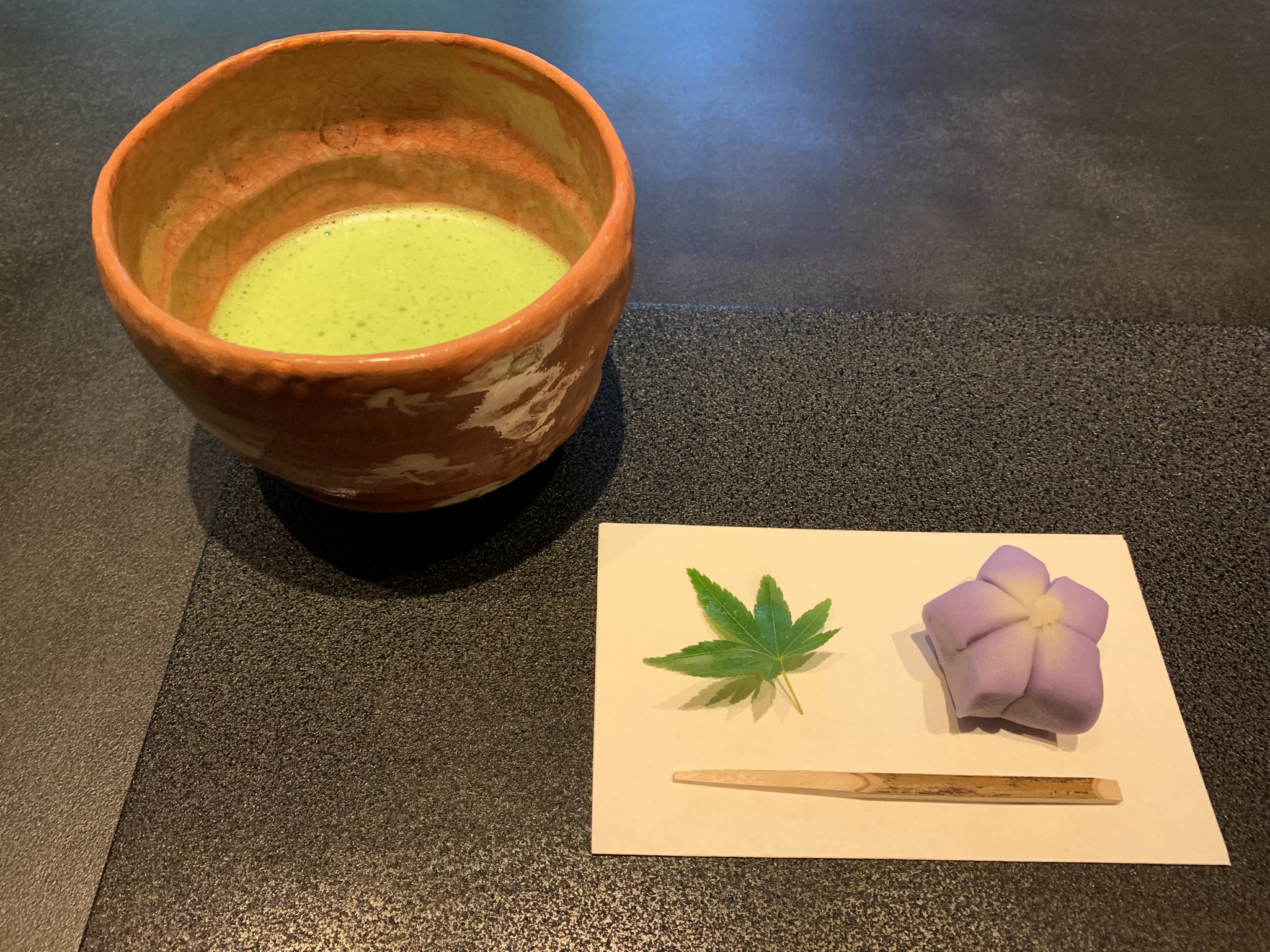Kanazawa is a wonderful little town on the west side of Honshu. It’s wonderful for a number of reasons: firstly, it was the seat of an important feudal clan and so has many big houses, temples and shrines, secondly, it escaped bombing during the Second World War, and thirdly, it has one of the top-ranked gardens in Japan.
Being a garden lover, I decided to visit Kenrokuen garden first. The guide book advised getting there early to avoid the crowds, so I bestirred myself and got there before 8 am, which was quite an achievement for a Saturday morning –

It’s full of trees, tea houses, statues, pagodas –

– and is a beautiful place for strolling and infusing yourself with zen first thing in the morning.
I wasn’t the only one there at that antisocial hour on a Saturday – there was the inevitable wedding couple –

who were shuffling in their traditional shoes from pictureque spot to picturesque spot, with a photographer and a woman who walked behind the bride with a battery operated fan –

Given the amount of clothing she’s wearing, I imagine it would be about as effective as cooling a blast furnace with a couple of ice cubes, but the thought was there. That’s the great thing about Japan, there’s always a system in place to deal with any situation; I’ve never met such detail-focused people before. Apparently they even have a special hoover to put down your throat if you start to choke on a mochi ball, which sucks the ball back up again so you can have another go at masticating.
Next door to the garden is one of the very few old samurai houses left in Japan; their fondness for building with wood in a very active seismic zone means that most things were burnt down at least once if not regularly, and most old buildings have been restored multiple times. But this one has the original painted screens and wooden carvings –

Nomura house was built by a top ranking Samurai for his mother ‘so that she could live in comfort’. I will be casually mentioning this to my children, and showing them some photos of the beautiful house and garden that this dutiful child created for his deserving mother.

All this tradition had whetted my appetite for more, so I went along to the kaga yuzen studio. Kaga Yuzen is a technique for handpainting silk kimonos, and in the studio you can see them on display – or …. you can have a go at wearing one!
First you choose your kimono –

and then you put on the undershirt –

– which is tied very tightly around the middle in several places.

The kimono goes on, and then the obi around the middle.

Then the large bow is tied on the back, and several layers of padding are stuffed under the obi, so that you achieve the Japanese ideal of beauty, which is obviously someone who resembles a sake barrel, but has the nape of the neck erotically exposed.
Then it was time for the photoshoot for my new portfolio – first the looking-back-over-the-shoulder shot, which is very popular in Japan –

Then the parasol shot, showing that I can twirl with the best of them when it comes to being sun safe –

and of course, the tea ceremony –

– I won’t get a job as a geisha if I can’t whisk the client’s matcha into a steamy, frothing brew.
There’s a traditional geisha house in Kanazawa which is open to the public during the day, so I went along to sample some tea and a delicious little cake –

– everything is always so exquisitely made and presented – and this cake tasted divine too, whilst the tea was whisked to perfection.

I’m currently updating my cv to reflect my change of direction, and if you would like to book a tea ceremony or some parasol twirling, please drop me a line.
I know that a geisha is supposed to be able to play the shamisen –

– but you’ll have to put up with a few chords on my ukulele, I’m afraid.
